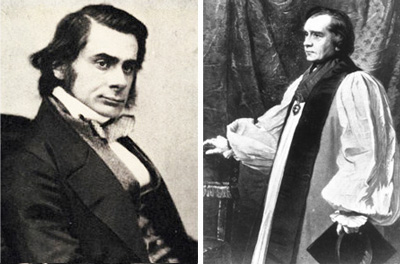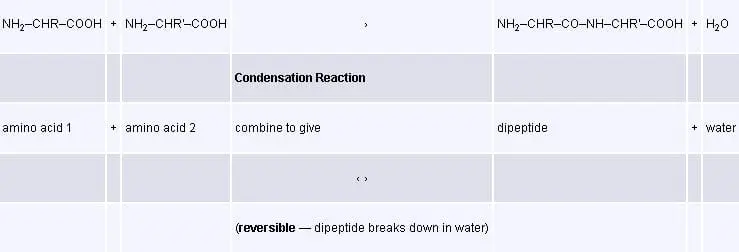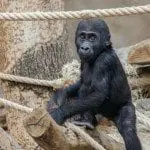
On 30 June 1860, there occurred an event which, in the minds of many people, was the turning point for the public acceptance of the theory of evolution in its confrontation with Christianity. This event was the debate between the agnostic Thomas Huxley, who came to be known as ‘Darwin’s bulldog’, and the Anglican Bishop of Oxford, Samuel Wilberforce, son of the famous anti-slavery politician, William Wilberforce. The debate was held at a meeting of the British Association, Oxford, of which Bishop Wilberforce was a vice-president, and was sparked by the publication of Charles Darwin’s Origin of Species seven months earlier, in November 1859.
Wilberforce was an experienced and skillful debater. As well as being a theologian, he was an able naturalist. He had also acquired a first in mathematics in his graduate days at Oxford. He was also a Fellow of the Royal Society, and had the unusual combination of being both Professor of Theology and Professor of Mathematics at the University of Oxford. He was well versed in Darwin’s theory as, shortly before the debate took place, he had written a 19,000-word review of the Origin, which was published in the Quarterly Review, July 1860. When Darwin read this review his comment was:
‘It is uncommonly clever; it picks out with skill all the most conjectural parts, and brings forward well all the difficulties.’1
Wilberforce began the debate and, after making several scientific points, concluded with Paley’s argument that a watch implies the existence of a watchmaker, and similarly design in nature implies the existence of a Designer.
Huxley then arose and is said to have put forward his now well-known argument that six eternal monkeys or apes2typing on six eternal typewriters with unlimited amounts of paper and ink could, given enough time, produce a Psalm, a Shakespearean sonnet, or even a whole book, purely by chance that is, by random striking of the keys.
In the course of his presentation Huxley pretended to find the 23rd Psalm among the reams of written gibberish produced by his six imaginary apes at their typewriters. He went on to make his point that, in the same way, molecular movement, given enough time and matter, could produce Bishop Wilberforce himself, purely by chance and without the work of any Designer or Creator.
It seems, from the various accounts of what happened (mostly letters written by Darwin’s followers, as no report on the debate was published by the British Association), that the worthy Bishop did not have an answer to this line of reasoning. This is rather surprising in view of his erudition in the realm of Mathematics. So let us consider some answers to Huxley’s argument—an argument that is still advanced from time to time by modern-day evolutionists—that chance is a better explanation for origins than design.
Chance vs. Design
Let us imagine a special typewriter, ‘user-friendly’ to apes, with 50 keys, comprised of 26 capital letters, 10 numbers, one space bar, and 13 symbols for punctuation, etc. For the sake of simplicity we shall disregard lower-case letters and settle for typing all to be in capitals, and we shall disregard leap years.
How long would it take an operator, on the average, to correctly type the 23rd Psalm, by randomly striking keys? To obtain the answer, let us first consider the first verse of the Psalm, which reads: ‘THE LORD IS MY SHEPHERD, I SHALL NOT WANT.’
According to the Multiplication Rule of Probability (in simplified form)3 the chance of correctly typing the three designated letters ‘THE’ from possibilities is 1 in 50 x 50 x 50, which equals 125,000. At a rate of one strike per second, the average time taken to make 125,000 strikes is 34.72 hours.
The chance of randomly typing the eight keys (seven letters and one space) in the right sequence for the two words THE LORD is 1 in 50 x 50 … eight times (i.e. 508). This is 1 chance in 39,062 billion. There are 31,536,000 seconds in a year, so the average time taken in years to make 39,062 billion strikes at the rate of one strike per second would be 1,238,663.7 years.
The time taken on the average to correctly type the whole of verse 1 of the 23rd Psalm, which contains 42 letters, punctuation, and spaces, would be 5042 divided by 31,536,000 (seconds in a year), which is 7.2 x 1063 years.
And the time taken on the average to correctly type the whole of the 23rd Psalm, made up of 603 letters, verse numbers, punctuation, and spaces, would be 50603 divided by 31,536,000 which is 9.552 x 101016 years.4 If the letter ‘b’ stands for billion (109), this could be written as about one bbbbbbbbbbbbbbbbbbbbbbbbbbbbbbbbbbbbbbbbbbbbbbbbbbbbbbbbbbbbbbbbbbb bbbbbbbbbbbbbbbbbbbbbbbbbbbbbbbbbbbbbbbbbbbbb years.
By comparison, the evolutionists’ age of the Earth is (only) 4.6 billion years, and the evolutionists’ age of the universe is (only) almost 15 billion years.
Probability of a DNA molecule forming by chance
When we apply probability theory to the correct arrangement of a DNA molecule, a similar situation is seen, as per the following quotation:
‘When we come to examine the simplest known organism capable of independent existence, the situation becomes even more fantastic. In the DNA chain of the chromosome of the bacterium E. coli, a favourite organism used by molecular biologists, the [DNA] helix consists of 3-4 million base pairs. These are all arranged in a sequence that is ’meaningful’ in the sense that it gives rise to enzyme molecules which fit the various metabolites and products used by the cell. This unique sequence represents a choice of one out of 102,000,000 alternative ways of arranging the bases! We are compelled to conclude that the origin of the first life was a unique event, which cannot be discussed in terms of probability.’5
Notice that this refers only to the correct arrangement of already formed bases. Harold J. Morowitz, Professor of Biophysics at Yale University, has taken into account the covalent bond energies required to actually form such a DNA molecule. He arrives at a probability figure for the spontaneous formation of one complete bacterium of Escherichia coli in the history of the universe, of less than one chance in 10 to the power 100 billion (which can be written 10-100,000,000,000).6
Such numbers are far too large for most people to comprehend. However, the late Sir Fred Hoyle , who was Professor of Astronomy at Cambridge University and was not a Christian, illustrated the point this way: ’Now imagine 1050 blind persons [that’s 100,000 billion billion billion billion billion people—standing shoulder to shoulder, they would more than fill our entire planetary system] each with a scrambled Rubik cube and try to conceive of the chance of them all simultaneously arriving at the solved form. You then have the chance of arriving by random shuffling [random variation] of just one of the many biopolymers on which life depends. The notion that not only the biopolymers but the operating program of a living cell could be arrived at by chance in a primordial soup here on Earth is evidently nonsense of a high order.7 (Emphasis added.)
Another of Professor Hoyle’s very expressive analogies is that the chance that even the simplest self-reproducing life forms might have emerged in this way (i.e. by evolutionary processes) is comparable with the chance that ‘a tornado sweeping through a junk-yard might assemble a Boeing 747 from the materials therein.’8 (See also Q&A: Probability).
Some objections countered
What about natural selection?
Lest it be thought that the Darwinian concept of natural selection could increase the chance of forming life (i.e. that with time, mutations may contribute superior survival value to some members of a species), it should be realised that natural selection could only work on a living organism that could produce offspring. By its very definition it could not work on non-living chemicals, as pointed out by leading evolutionist Dobzhansky.8
To try to get around these insurmountable difficulties, some evolutionists are now postulating that the universe is eternal, because if time is eternal, they argue, then theoretically any event is certain to occur.
Eternal universe?
The idea of an eternal universe cannot be substantiated, however, because the universe is slowly approaching ‘heat death’ in accordance with the second law of thermodynamics. Heat death will occur when all the energy of the cosmos has been degraded to random heat energy, with random motions of molecules and uniform low-level temperatures. If the universe were eternal, this state would have been reached ‘a long time ago’. The fact that the universe is not dead is clear evidence that it is not infinitely old. For more information, see Who created God?
‘Somewhere, sometime’
To overcome this problem, Huxley’s modern-day supporters are ready to talk about previous universes before the present one, and other spaces ‘beyond’ our space. They then argue that, no matter how small the probability of an event, it will occur with the probability one (certainty) ‘somewhere, sometime’, as long as the probability is not actually zero (impossibility). Moreover, they claim that the reason we observe the realization of the totally unlikely event is that it can only be observed by the sentient beings it produced. However, as Professor A.M. Hasofer (Statistician, University of New South Wales) has pointed out in a private communication,9 there is a fatal scientific weakness in such reasoning, because such a model fails Karl Popper’s fundamental criterion of scientific acceptability, that it be falsifiable.
Professor Hasofer writes:
‘The problem [of falsifiability of a probabilistic statement] has been dealt with in a recent book by G. Matheron, entitled Estimating and Choosing: An Essay on Probability in Practice (Springer-Verlag, 1989). He proposes that a probabilistic model be considered falsifiable if some of its consequences have zero (or in practice very low) probability. If one of these consequences is observed, the model is then rejected.
‘The fatal weakness of the monkey argument, which calculates probabilities of events “somewhere, sometime”, is that all events, no matter how unlikely they are, have probability one as long as they are logically possible, so that the suggested model can never be falsified. Accepting the validity of Huxley’s reasoning puts the whole probability theory outside the realm of verifiable science. In particular, it vitiates the whole of quantum theory and statistical mechanics, including thermodynamics, and therefore destroys the foundations of all modern science. For example, as Bertrand Russell once pointed out, if we put a kettle on a fire and the water in the kettle froze, we should argue, following Huxley, that a very unlikely event of statistical mechanics occurred, as it should “somewhere, sometime”, rather than trying to find out what went wrong with the experiment!’
Reversibility—the Achilles’ Heel of biogenesis by chance
There is one other aspect that needs to be considered—yet another fatal flaw in Huxley’s reasoning and that of his modern-day followers—when applied to the idea of biogenesis by chance or the formation of living cells from chance combinations of molecules. Let us consider the situation where time is infinite, and probability equals one. We have just seen that evolutionists do not have infinite time, but just suppose they did, could Huxley’s argument be sustained? In particular, could chance combinations of molecules produce life (or even Bishop Samuel Wilberforce), if there was no restriction on time?
The idea that life can form spontaneously from non-life involves the formation of proteins10 from peptides which have formed from amino acids, (which have formed from the gases in a reducing atmosphere).11 However, the biochemical reactions involved in the formation of proteins from peptides and peptides from amino acids are reversible—they go the other way as well.12 This is represented below in the simplest reaction of two amino acids forming a dipeptide while releasing a molecule of water (the R in the table stands for any one of 20 different functional groups. The different R groups are responsible for the wide variety of proteins, and the precise sequences are very specialized and improbable):
Under the right conditions, the condensation continues, with a dipeptide reacting with a third amino acid to form a tripeptide and releasing another water molecule, and so on. Sometimes hundreds or thousands of amino acids link up, with a corresponding number of water molecules released. For n amino acids in a chain, n-1 water molecules are released.
This means that condensation reactions, like the synthesis of peptides from amino acids, are inhibited by excess water, and the reverse reaction is favoured. Professor A.E. Wilder-Smith, commenting on this fact, writes:
‘The consequence of this well-known fact of organic chemistry is important: concentrations of amino acids will combine only in minute amounts, if they combine at all in a primeval ocean providing excess water, to form polypeptides. Any amounts of polypeptide which might be formed will be broken down into their initial components (amino acids) by the excess water. The ocean is thus practically the last place on this or any other planet where the proteins of life could be formed spontaneously from amino acids. Yet nearly all textbooks of biology teach this nonsense to support evolutionary theory and spontaneous biogenics. It requires a very great unfamiliarity with organic chemistry not to take into consideration the above-mentioned facts when proposing postulates for biogenesis…’13 (Emphasis in the original.) [See also Origin of life: the polymerization problem.]
In the case of biogenesis, these reversible reactions are all in equilibrium with one another, since there is no cell machinery to remove products selectively. In the body, organic reactions such as the synthesis of proteins and the oxidation of fats occur because of the intervention of specific enzymes (acting as a type of ‘chemical machinery’)14 acting specifically at each step along the reaction chain. However, enzymes are proteins, and one cannot claim synthesis for a product if one begins with the product one is trying to end up with.
The purpose of Huxley’s typewriter argument was to show that, given enough time, any event is certain to occur. However, for this argument to be analogous to the idea of the formation of proteins by chance combination of amino acid molecules, Huxley’s typewriters needed to be reversible!
With an ordinary typewriter, any words typed by an ape would stay on the paper and would not get modified into more meaningful combinations, nor would they decompose into their constituent letters. This means that each word is out of equilibrium with its precursors and has no ‘postcursors’.
However, with a reversible typewriter, when the key ‘A’ (for example) was depressed, the letter ‘A’ would be printed on the paper; but when the same key was released, the printed letter ‘A’ would arise from the paper without leaving a trace, so that the typewriter would type out just as quickly and effectively as it typed in. All of which means that Huxley’s eternal apes would have typed as much or as little after one second as after a billion years.
Furthermore, it would not matter how many billion apes were typing (or molecules of matter were combining), or how many (billion) times per second this might have been happening. The result at any time would always be zero, whether it be apes typing reversible typewriters or amino acids combining in reversible reactions.
Another way of saying this is that ‘increased time spans in biological systems will merely increase the probability of equilibrium being set up, and not the probability of improbable reaction products being formed’.15,16
Conclusion
The concept of ‘somewhere, sometime’ does not apply, because the probability of forming a stipulated end-product from reversible reactions in equilibrium is zero.
The theory that chance random combinations of living matter could produce the Bishop of Oxford, a living cell, or even a single functional protein molecule, whether in time or in eternity, therefore fails on all counts.
Life is bristling with machinery, codes and programs, which are not an inherent property of the material substrate (the information for their construction having been passed on during reproduction). No observation has ever shown such information-bearing structures arising spontaneously. The obvious inference from science, as well as the obvious implications of Scripture, is that the original creation of living things involved the very opposite of chance, namely, the imposition of external intelligence on to matter by an original Designer or Creator.
Addendum: Did Wilberforce really say it?
Writers dealing with the famous debate between Huxley and Wilberforce often repeat the story that the Bishop, towards the end of his speech, turned to Huxley and asked whether it was through his grandfather or his grandmother that he claimed descent from an ape? Huxley, in reply, is supposed to have said that he was not ashamed of having an ape as an ancestor, but he would be ashamed of having as an ancestor a man who used his abilities in a sphere of science with which he had no real acquaintance and who used aimless rhetoric in an appeal to religious prejudice.
J.R. Lucas sums up the evidence for and against this story in a long article in the Historical Journal,17 summarized in Nature.18 He points out that the audience was ‘larger than a full House of Commons’, which means that, in the noisy and somewhat gladiatorial circumstances of this debate, not everyone would have correctly heard everything that was said.
Of Wilberforce’s science, as presented in the debate, Lucas says: ‘These were serious scientific arguments, worthy of a vice-president of the British Association. Darwin acknowledged their cogency’. He goes on to say,
‘It is doubtful that Wilberforce asked Huxley whether he was descended from an ape. It makes a good story, but Wilberforce had used the first person plural in his review, and the use of the first person is borne out by Wilberforce’s biography and one—admittedly late—account. What Wilberforce may have asked Huxley in the second person is where he drew the line between human descendants and ape-like ancestors, if, as was generally admitted, the offspring was of the same species as the parents.19Huxley, however, was ready to answer the question he had not been asked. Three months earlier, in the April issue of the Westminster Review, he had accused critics of Darwin of making him out to be no better than an ape himself, and since Wilberforce was now criticizing him for being a Darwinian, he must be calling him an ape too.’
It would seem therefore that Wilberforce did not try to ridicule Huxley, but rather the reverse was actually what happened. If so, it gives a very different picture of what really occurred at this famous debate.
Related Articles
References and Endnotes
- Charles Darwin, Life and Letters, Vol. 2 ed. Francis Darwin (New York: Appleton and co., 1911), pp 117–8.
- Huxley used the term ‘apes’ but modern-day writers on this theme tend to prefer ‘monkeys’, e.g. David Osselton, ‘Making a Monkey of Shakespeare’, New Scientist, November 1, 1984, p. 39.
- The formula used here, 1/pr, is not strictly accurate, but is used for the sake of simplicity in the comparison of time. According to W. Feller, An Introduction to Probability Theory and Its Application (3rd Edition, 1957), Vol. 1, pp. 332–324. ‘Application to the theory of success runs’, the formula for the mean time umeasured in number of symbols is given by u = 1-pr/qpr or u – 1-pr/qpr where q = 1-p. In our case p = 1/50, and the whole Psalm r = 603. But for practical purposes it hardly differs.
- If we take the solar year of 365 days, 5 hours, 48 minutes, 46 seconds, or 31,556,926 seconds (from which the concept of leap year is derived), the answer would be 9.546 x 101016 years, (using 1/pr for ease of comparison).
- Ambrose, E. The Nature and Origin of the Biological World, 1982, p. 135, (italics added) as quoted in Bird, W.R. The Origin of Species Revisited, Philosophical Library, New York, 1989, Vol. 1, pp. 302–3.
- Morowitz, Harold J., Energy Flow in Biology, Academic Press, New York, 1968, P.67.
- Hoyle, Fred, ‘The Big Bang in Astronomy’, New Scientist 92(1280):527, 19 Nov 1981.
- See Theodosius Dobzhansky, comments on ‘Synthesis of Nucleosides and Polynucleotides with Metaphosphate Esters’, in The Origins of Prebiological Systems299:310 (S. Fox ed. 1965), cited in Bird, The Origin of Species Revisited, Vol. 1, p. 359. Bird summarises the case against natural selection working on non-living chemicals on pages 359–362. For a recent article advancing the evolutionist’s case see ‘Survival of the fittest molecules’, New Scientist, 3 October, 1992, pp. 37–40. And not only can natural selection not explain the origin of life, there are other limitations, as shown in Weasel, a flexible program for investigating deterministic computer ‘demonstrations’ of evolution.
- I wish to thank Professor A.M. Hasofer, of the school of Mathematics, University of New South Wales, for his valued advice on this part of the article.
- There is, of course, a vast difference between a test-tube of protein and a test-tube of living cells. Some of the characteristics of life are: the ability to get energy and materials from the environment, the ability to self-repair, and the ability to reproduce.
- Experiments like the Miller–Urey synthesis are irrelevant to the point of this article—they represent the formation of some jumbled ‘alphabet letters’ if you like, not the arrangement of these into codes and sequences. There is nothing inherently improbable about their formation under such conditions, as the ‘coding’ to produce them is already there. However, they lead to a dead end in origin-of-life experiments because the mixture formed is a tarry goo of all sorts of other molecules as well, which acts against further synthesis. In addition, a racemic mixture of left-handed and right-handed forms results, whereas living things use one ‘hand’ exclusively.
- For a full treatment of this aspect see A.E. Wilder-Smith, The Natural Sciences Know Nothing of Evolution (San Diego, CA: Master Books, 1981), Chapter 2, Biogenesis by Chance? pp. 11–16.
- Ibid., p. 16.
- Cell machinery ensures that products are removed from the reaction before they can revert to reactants, which results in irreversibility. The ‘primordial soup’, from which life is alleged to have evolved, would have no such elaborate machinery, so the reaction would tend towards equilibrium which is away from life.
- Harold F. Blum, Time’s Arrow and Evolution, 2nd ed. (Princeton, NJ: Princeton University Press, 1955), quoted in A.E. Wilder-Smith, Man’s Origin, Man’s Destiny(Bethany Fellowship Inc., 1975), p. 65.
- It is acknowledged that not all the amino acids positions in a particular functional protein are crucial—i.e. to continue the analogy, there is more than one way of correctly writing the 23rd Psalm. However, this merely reduces the ‘odds against’ from something approaching infinity to a little less than infinity. For a full discussion of the calculations involved see the section ‘Criticisms of Probability Calculations’, in Bird, The Origin of Species Revisited, Vol. 1, pp. 306–308.
- J.R. Lucas, ‘Wilberforce and Huxley: A Legendary Encounter’, The Historical Journal 22:313–330, 1979.
- J.R. Lucas, ‘Wilberforce no ape’, Nature 287:480, 9 October 1980.
- I. Huxley, Life and Letters of Thomas Henry Huxley, Vol. i, p. 185, quoting Vernon Harcourt.








